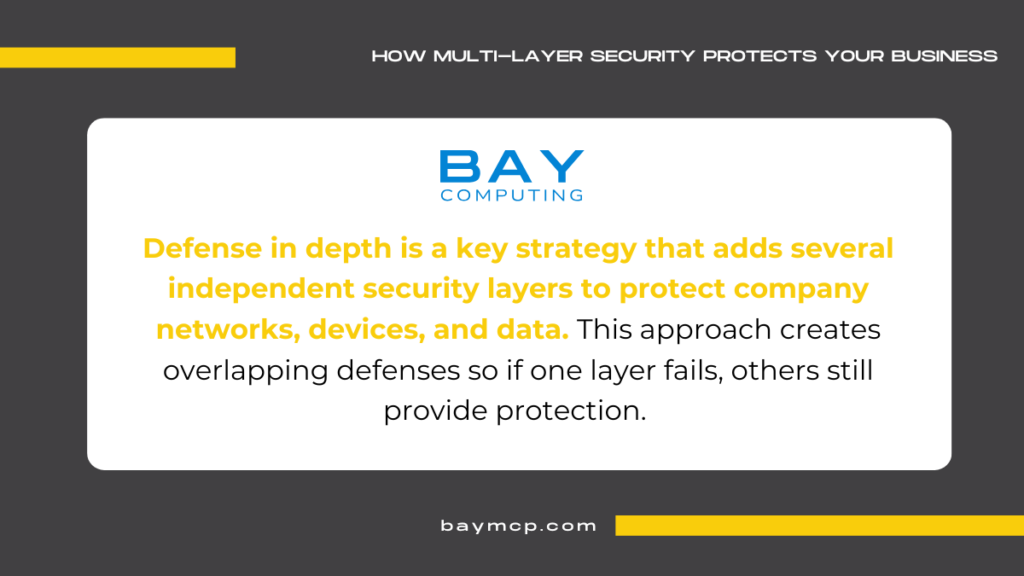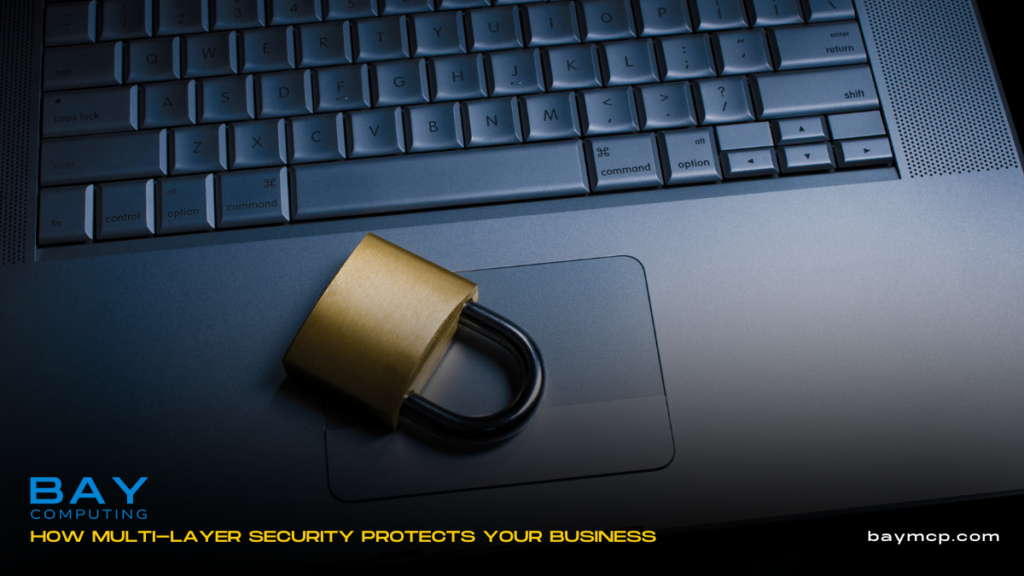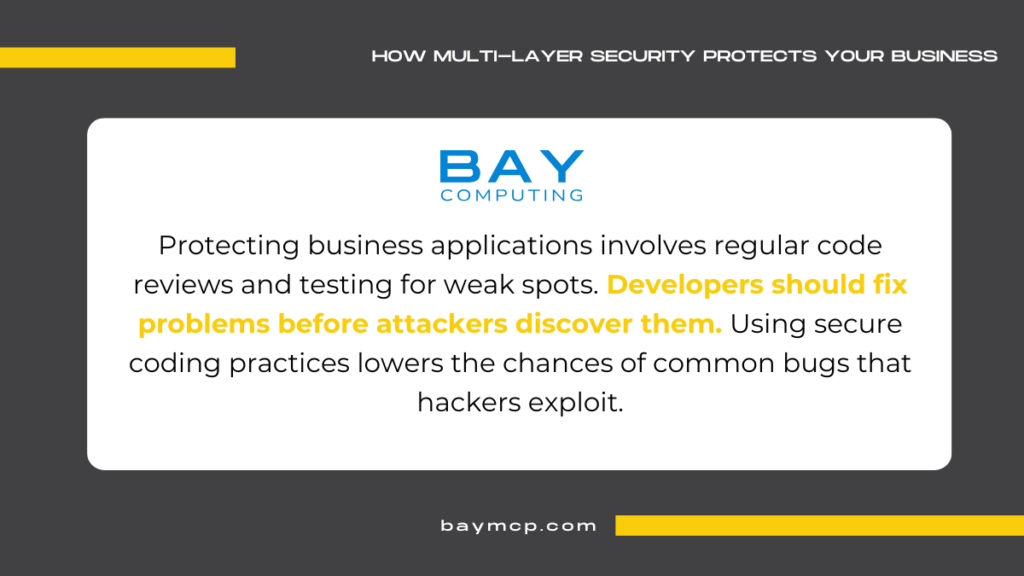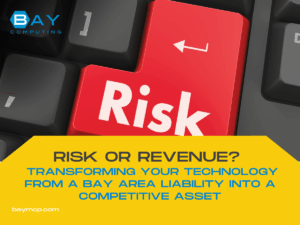How Multi-Layer Security Protects Your Business
Every day, businesses face online threats like malware, hackers, and phishing scams. A single security measure isn’t enough to keep these risks away. Multi-layer security uses several defenses working together, making it much harder for attackers to get through and cause harm to a business.
With layers of protection, each part targets a different kind of threat, such as stopping viruses, blocking suspicious emails, and protecting sensitive data. This reduces the chances of data loss or costly downtime. Companies that choose multi-layer security build a strong shield against both known and new dangers.
Learning how multi-layer security works helps businesses understand why it is important for keeping information safe. Organizations can better protect their systems and stay ahead of cyber criminals by using these security layers throughout their networks.
Core Principles of Multi-Layer Security
Multi-layer security uses several controls and tools to protect business systems from threats. Each layer targets different risks, blocks unauthorized access, and helps identify security events early.
Defense in Depth Explained
Defense in depth is a key strategy that adds several independent security layers to protect company networks, devices, and data. This approach creates overlapping defenses so if one layer fails, others still provide protection. For example, a firewall may block external threats while antivirus software detects malware that slips through.

By having several barriers, it becomes much harder for attackers to move deeper into systems. Each defense focuses on either prevention, detection, or response. According to security experts, these three elements work together to stop, spot, and handle threats when they occur. This type of defense in depth greatly lowers the risk of a single point of failure.
Layered Protection for Critical Assets
Sensitive business data like financial records or personal customer information is often the main target for cybercriminals. Layered protection puts special safeguards around these high-value areas. This might include strong passwords, two-factor authentication, encryption, and strict access rules.
Some layers focus on keeping outsiders away from critical systems, while others monitor for suspicious activity internally. Even if an attacker gets past one barrier, additional layers make it very hard to reach confidential assets. A multi-layered security model means threats like malware and phishing have to bypass several different security checkpoints to do serious harm.
Reducing Attack Surface
The attack surface is the total number of ways an attacker can try to break into a system. A smaller attack surface means fewer opportunities for cyber threats. Multi-layer security reduces the attack surface by controlling access, shutting down unused services, and patching software weaknesses.
Using strict rules for both internal and external network access is important. Limiting permissions and keeping software up-to-date can cut down on paths attackers might use. Regularly removing old accounts and deactivating unused features also helps. By carefully managing these points of entry, organizations lower their risk and make it much tougher for threats to succeed.
Implementing Multi-Layer Security in Your Business
Businesses can lower the risk of data breaches by combining digital and physical security measures. Using several types of protection at different points in the organization gives each important area better coverage.
Network Security Controls
Strong network security protects data as it moves through company systems. Firewalls check incoming and outgoing traffic and block suspicious activity. Intrusion detection systems alert teams when a threat is found. Virtual private networks (VPNs) add privacy for employees who connect remotely.

Network segmentation limits the spread of threats by dividing the system into smaller parts. Each section gets its own rules. This makes it harder for attackers to reach important data.
Encryption is another key control. It scrambles information so only people with permission can access it. Businesses should also update network equipment often to patch known security holes.
Multi-factor authentication (MFA) adds another layer by requiring more than just a password to log in. This helps prevent unwanted access, even if someone’s password is stolen.
Endpoint Protection Strategies
Endpoints like computers, tablets, and mobile phones are popular targets for hackers. Installing reliable antivirus and anti-malware programs defends against many threats. Automatic updates help keep these tools working against the newest risks.
Using device management tools lets companies control which devices can access their network. Lost or stolen devices can be wiped remotely to protect sensitive data. Strong password policies and screen lock features also help stop unauthorized use.
Limiting which apps can run on devices protects against harmful software. Training employees not to click on suspicious links or download strange files reduces the chance of mistakes that let threats in. Simple guidelines make a big difference on every device.
Application Security Measures
Protecting business applications involves regular code reviews and testing for weak spots. Developers should fix problems before attackers discover them. Using secure coding practices lowers the chances of common bugs that hackers exploit.

Web application firewalls monitor requests to online tools, blocking suspicious activity. Access controls make sure only the right people can use specific features or see certain information.
Multi-factor authentication for user accounts keeps attackers from breaking in with just stolen passwords. Businesses should track which apps are used and remove old or unused ones to cut down on risk. Frequent security updates keep vulnerabilities patched and systems safe.
Physical and Environmental Safeguards
Physical security is just as important as digital security. Locking doors, installing cameras, and using security passes limit access to important areas. Only trained staff should enter server rooms or data centers.
Environmental controls like fire alarms, climate control, and backup power protect systems from damage. Smoke detectors and water sensors provide early warnings. Keeping servers off the floor and away from windows can prevent damage from leaks or outside threats.
Shredding sensitive documents before disposal helps keep private information safe. Training all employees on how to recognize and report suspicious activity increases overall protection. Clear rules for visitors help keep unauthorized people out of restricted spaces.
Protect Your Business with Multi-Layer Security Today
Cyber threats can strike at any moment. Bay Computing offers customized multi-layer security solutions to safeguard your business from all angles—before it’s too late.
Take action now to secure your future. Contact us and fortify your defenses today.




